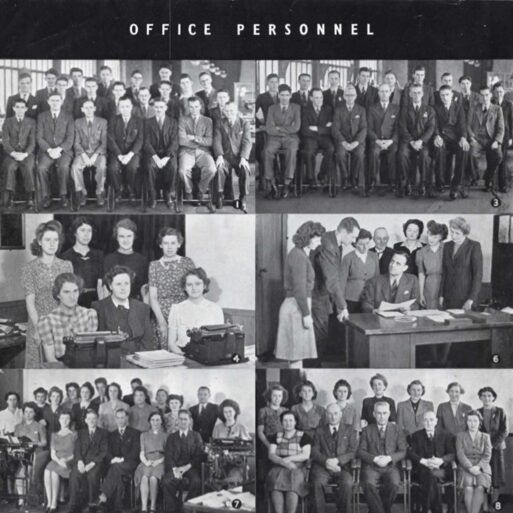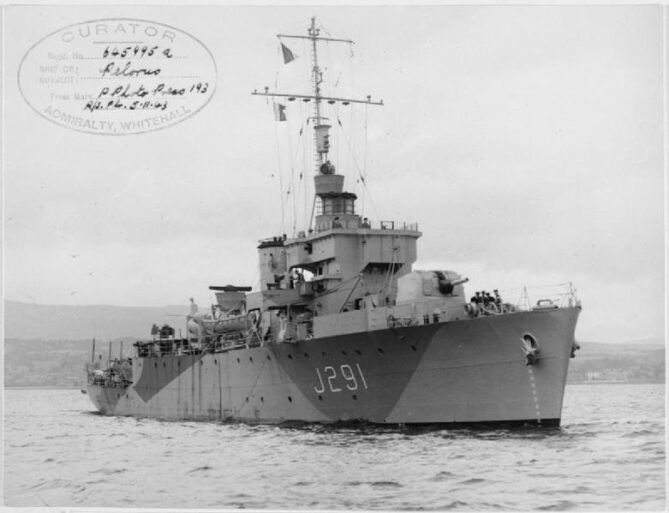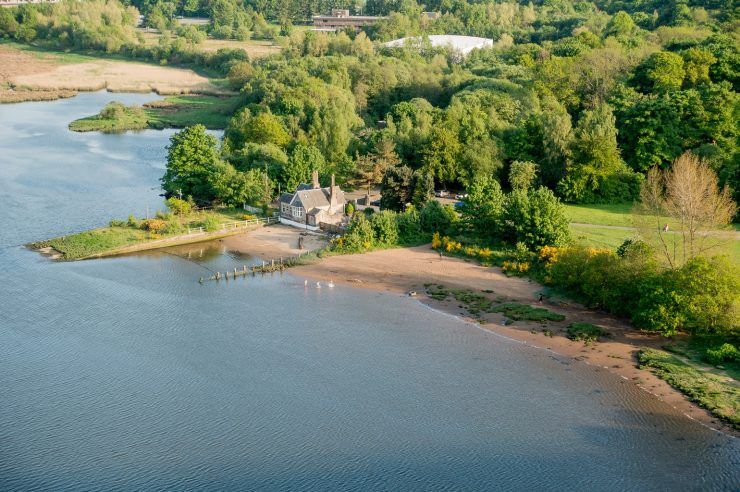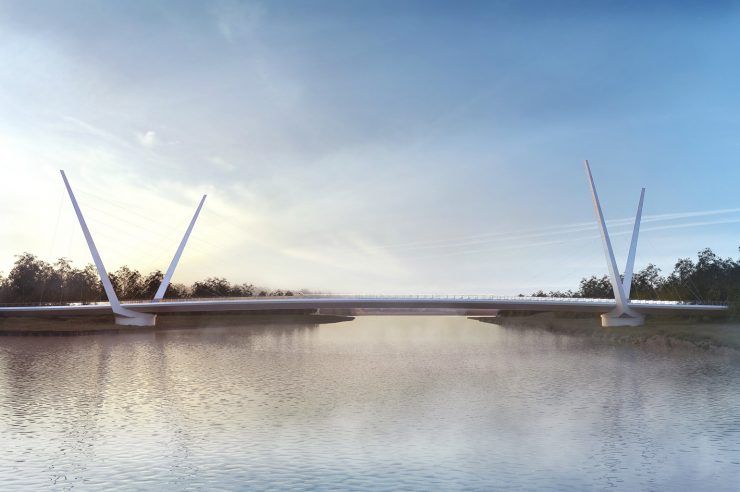Did you know that the Renfrew shipyard of Lobnitz & Co. played not one but two major parts in the D-Day invasion?
D-Day is the name given to the June 6, 1944 invasion of the beaches at Normandy in northern France. Troops from the United States, Canada, the United Kingdom and other countries landed at the beaches during World War II.
Shipyards across Scotland were involved in building ships, supplies, and infrastructure for the war effort. However, our local shipyard in Renfrew was responsible for two key parts of a day that turned the tide of the war.
Leading the minesweeping
On the 8 October 1942, construction of HMS Pelorus, a minesweeper began. It was launched on the 18 June 1943 and commissioned two months later on the 7 October. Incredibly, it was only 364 days from the initial construction to active service. That’s speedy for a ship!
HMS Pelorus was assigned to the 7th Minesweeping Flotilla and served as the flotilla leader. In June 1944 it was assigned to sweep minefields that protected Juno Beach. Which is where Canadian forces were due to embark as part of the landings.By taking the lead of the minesweep, Pelorus led the entire D-Day invasion fleet on the 6 June 1944.
To make it even more appropriate in naval terms, it was commanded by Commandeer George Nelson R.N. who replied to the message “Good luck, drive on” from Admiral Sir Bertram Ramsay with “Aye, aye sir, with Nelson in the Van”. A reference of course to the renowned Admiral Nelson.
A letter sent from Nelson to Lobnitz on the 11 July 1944 confirmed newspaper accounts of the story. 200 copies of the newspaper article were sent to the ship’s crew as a memento.
The Mulberry Pierheads
HMS Pelorus played a vital part in D-Day. But the invasion would not have been as successful without the magnificent floating harbours that were used by the allies.
Several years were spent designing and testing many floating harbours and pier heads. However, the winning design was based on a Lobnitz Suction Dredger. Brigadier Sir Bruce G White had seen a Lobnitz Dredger preform well in a storm in the Bahamas a few years previous.
Renfrew based Pearson Lobnitz and his design team quickly designed a prototype. Edinburgh based Redpath, Brown & Co Ltd were appointed to supply the steelwork required. And Alexander Findlay & Co Ltd of Lankarkshire were appointed to erect it. Designed on paper in December 1942, the prototype was in the Solway Firth by April 1943. This was remarkable given 1,000 tons of steel was involved.
The Mulberry Harbour Pierhead designed by Lobnitz was given approval after 13 months of testing, and construction began supervised by Lobnitz representatives all over Britain. The Mulberry Pierheads used 4 concrete ‘Spuds’ to raise the harbour platform above the water during stormy weather.
An invaluable impact
The Mulberry Harbours and their floating roadway made the allied invasion of France possible on the 6 June 1944. The complex of floating harbours proved invaluable, landing 150,000 men and over 400 tons of supplies needed per day to look after them.
If the allies had depended on capturing a French port, failure would most likely have followed. Additionally, the main ports of Cherbourg and Le Harve had been extensively damaged, rendering them useless for over six months.
Find out more about about the history and heritage of Renfrew today.




